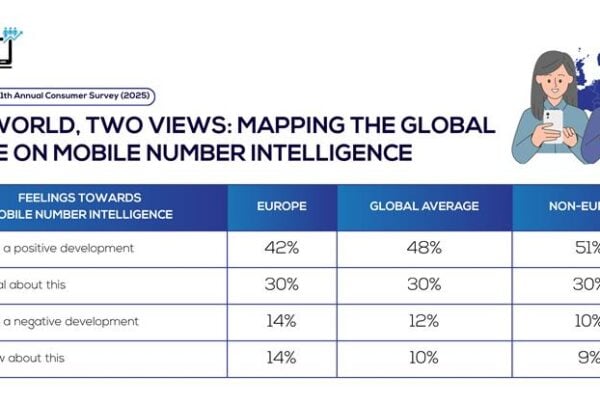MEF’s Riccardo Amati examines how a cloud communications firm posts its fourth consecutive earnings surprise, driven by higher margin services, disciplined cost control, and a focused AI strategy that continues to boost investor optimism.
Shares in Swedish cloud communications platform Sinch soared about 20% after the company posted second-quarter results on Julye 22, that beat expectations on the bottom line, driven by strong organic EBITDA growth and margin improvements. The performance was largely attributed to an ongoing product mix shift toward higher-margin services—particularly in email and voice interconnect—and a reduction in low-margin SMS traffic.
While reported revenue declined 6% year-over-year due to translational currency effects, the company managed 2% organic net sales growth. The discrepancy highlights FX headwinds from the weakened U.S. dollar. This raises questions about future revenue acceleration, but consistent gross profit and EBITDA improvements suggest that Sinch is building a resilient and scalable model. If the recent pace continues, analysts and investors say the stock remains attractive despite its strong run so far this year.
“We delivered strong EBITDA growth and margin expansion in Q2, reflecting our focus on high-value services and disciplined cost control,” said Sinch CEO Laurinda Pang. “This performance validates our strategy and supports long-term sustainable growth.”
Sinch reported adjusted EBITDA of approximately USD 82.8 million (SEK 869 million), showing 8% organic growth from a year earlier, and EBITDA of about USD 72.4 million (SEK 760 million), up 4% organically. Gross profit rose to around USD 219 million (SEK 2.3 billion), with 6% organic growth, and the gross margin expanded to 35% — a notable achievement in a quarter with FX pressure.
The Product Mix: Shifting Toward Higher-Value Services
Executives highlighted strong results in email and voice interconnect, both of which offer higher margins, as well as a favorable shift in product and customer mix—especially in APAC and the Americas. Email services achieved double-digit organic growth in both revenue and profitability, helping to offset declines in traditional SMS volumes and slower net sales growth. Rich Communication Services (RCS) traffic rose by an impressive 27% quarter-on-quarter, though management noted that RCS has not yet made a material revenue contribution or compensated for lower SMS revenues. CEO Laurinda Pang underscored the company’s ongoing AI integration, calling it foundational for future growth: “AI is structural and will change communication methods. While we’re embedding AI in our products and seeing some impact, we expect more significant opportunities in the future.” She added that AI is expected to drive higher communication volumes, benefiting Sinch’s infrastructure, and emphasized the importance of making services easily discoverable and consumable by AI agents.
Operations: Investments & Strengthening Financial Resilience
Operationally, Sinch continued to generate solid cash flows, with USD 49.8 million (SEK 523 million) in free cash flow and a cash conversion rate of 60% quarterly. The company also lowered its net debt to USD 495 million (SEK 5.2 billion) improving its leverage ratio to 1.3x adjusted EBITDA, reinforcing financial flexibility. On top of that, Sinch announced its first-ever share buyback program, underlining management’s confidence in the company’s cash generation and capital position. The initiative is widely seen as accretive, supporting improved return metrics and shareholder value.
On cost trends, Pang and CFO Jonas Dahlberg noted that organic OpEx growth accelerated in Q2, consistent with the company’s prior guidance to increase strategic investments—largely self-funded—including inflation-related wage adjustments.
Analysts: Positive on Discipline, Watchful on Revenue
Analysts reacted favorably to the results, boosting their price targets while diverging in overall recommendations. Danske Bank raised its target to SEK 41 (from SEK 33) and reiterated its Buy rating, citing “solid execution and margin durability.” DNB Carnegie also lifted its target to SEK 44 (from SEK 41), maintaining a Buy recommendation and highlighting improved financial discipline and AI leadership potential. Cantor Fitzgerald moved its target up to SEK 28 (from SEK 23) but kept a Neutral stance, flagging slower revenue growth as a concern. Meanwhile, Handelsbanken increased its target price to SEK 38 (from SEK 31) but downgraded Sinch to Hold, reflecting valuation caution after the stock’s strong rally.
Sinch shares have already climbed nearly 70% year-to-date, reflecting a market that’s warming up to the company’s profit-focused transformation and digital strategy. According to Dagens industri, this is the third consecutive quarter where Sinch has delivered a positive earnings surprise, strengthening its case as a turnaround story still in progress. The paper maintains its Buy stance on the stock, contingent on continued margin improvement and strategic discipline.
With FX headwinds lingering and macro uncertainty in play, management remains cautious. “We haven’t seen significant impacts yet, but we remain cautious due to the volatile environment. Enterprises may slow spending or seek cost efficiencies, so we’re being prudent with expenses to protect profitability,” Pang said.
Still, the tone from Sinch is clear: despite external pressures, the internal engine is running more efficiently than ever. Investors seem to agree.
Take-aways for the ecosystem
Sinch’s latest results offer a window into where the broader CPaaS industry is heading. As traditional SMS volumes decline, the company’s pivot toward higher-value services like email and voice interconnect is finding a way to drives profitability in the sector. Voice and Email are not seen as the growth drivers in the industry, but they are good profit generators. Emerging services would include Rich Communication Services (RCS), there traffic is growing rapidly, but it needs more time to mature into a sizable business line / profit area.
At the same time, Sinch’s investment in AI is a signal to the entire ecosystem: artificial intelligence isn’t just a buzzword, but a foundational technology that will reshape how businesses and consumers interact. By embedding AI into its products, Sinch is preparing for a future where communication is not only more automated, but also more personalized and efficient.
Meanwhile, Sinch’s cautious approach to spending and its focus on financial resilience reflect a wider industry reality: in a volatile macroeconomic climate, companies must balance innovation with discipline.
In short, Sinch’s journey this quarter encapsulates the industry’s broader transformation—toward smarter, more valuable services, powered by AI and underpinned by strong infrastructure, all while navigating the uncertainties of a changing world.
MEF Podcasts
For more discussion, interviews and insights subscribe to our three regular podcast channels
Listen Now…









